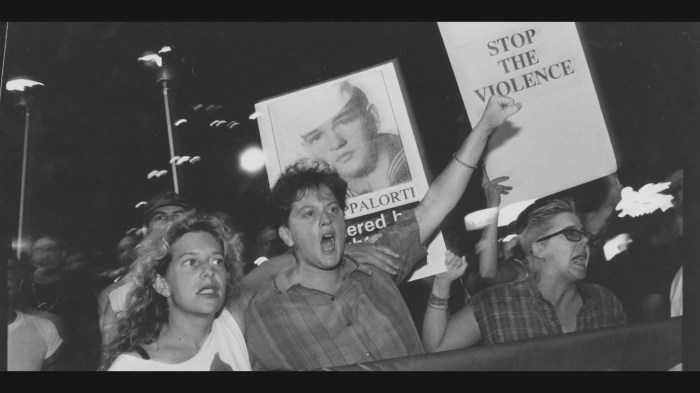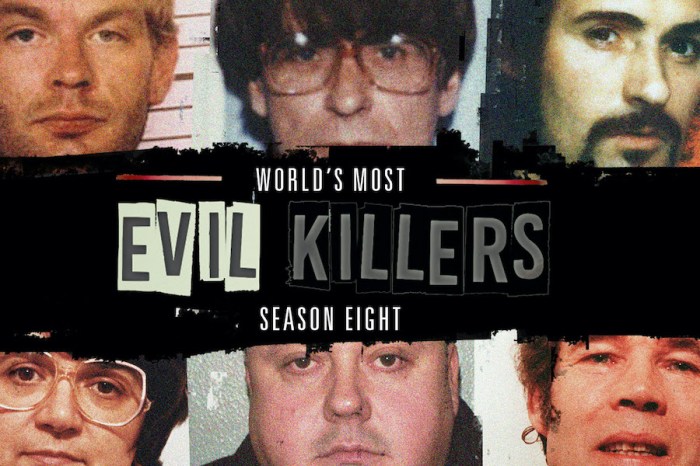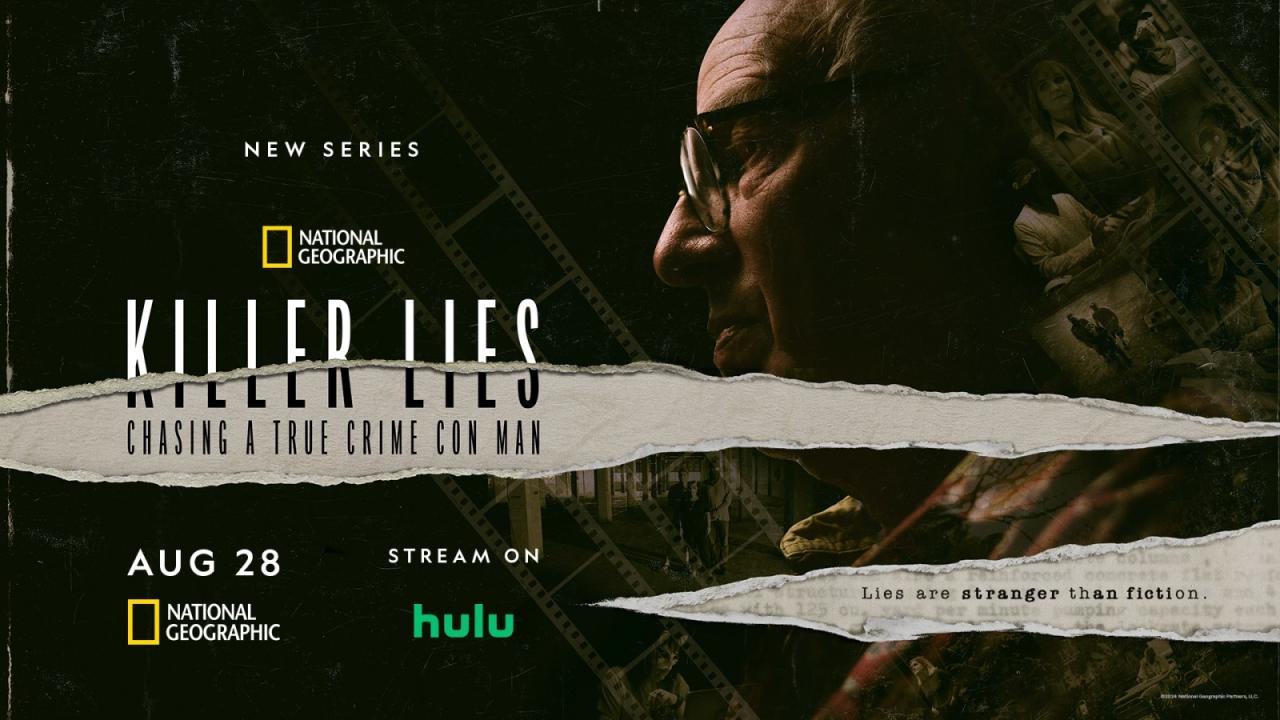
True crime killers have long captivated audiences with their chilling tales and complex psyches, drawing us into a world where the extraordinary meets the horrifying. These real-life figures challenge our understanding of morality and the human condition, offering a glimpse into the darkest corners of human behavior.
In exploring the biographies of infamous killers, we uncover not just the shocking details of their crimes but also the psychological factors that contributed to their actions. Additionally, the evolution of true crime narratives sheds light on how society’s perceptions of these individuals have shifted over time, especially as depicted in media and documentaries.
Infamous True Crime Killers

True crime stories captivate audiences with their dark narratives and chilling details, often centered around notorious killers whose heinous acts have shocked the world. These individuals not only committed unimaginable crimes but also left an indelible mark on society, becoming subjects of fascination and horror. Understanding their biographies and psychological profiles can provide insight into the minds of these infamous figures.An exploration of infamous true crime killers reveals the complexity of their backgrounds and motivations.
Often stemming from troubled childhoods, these individuals exhibit distinct psychological traits that contribute to their criminal behaviors. Their stories serve as a stark reminder of the depths of human depravity and the factors that may lead someone down such a dark path.
Biographies of Notorious True Crime Killers
The biographies of notorious killers often reveal patterns of early trauma, environmental influences, and psychological struggles. Below are detailed descriptions of some of the most well-known figures in the realm of true crime.
- Ed Gein: Born in 1906 in Wisconsin, Gein is often regarded as the inspiration for multiple horror films. Raised by an abusive mother, he developed a fascination with death after her passing, leading him to commit gruesome acts, including grave robbing and murder.
- John Wayne Gacy: Gacy, known as the “Killer Clown,” was a Chicago-based contractor who lured young men to his home, where he ultimately murdered them. His charming personality and community involvement masked the horrific crimes he committed in the 1970s.
- Jeffrey Dahmer: Dahmer, notorious for his gruesome murders and acts of cannibalism, was responsible for the deaths of 17 young men between 1978 and 1991. His case highlighted severe psychological issues, including necrophilia and a compulsion to control his victims.
Psychological Profiles of Infamous Killers
Understanding the psychological profiles of infamous killers is crucial in deciphering their motives and behaviors. Many of them exhibit common traits associated with antisocial personality disorders, showcasing a lack of empathy, manipulative tendencies, and a disregard for societal norms.
- Antisocial Behavior: Most infamous killers demonstrate a pattern of violating the rights of others, engaging in deceitful or manipulative conduct without remorse.
- Isolation and Loneliness: A significant number of these individuals experience profound feelings of isolation that may contribute to their violent actions.
- Familial and Environmental Influences: Many notorious killers have histories of abuse or neglect in their formative years, shaping their psychological development and leading to their eventual criminal behavior.
Shocking Crimes Committed by Famous Killers
The crimes committed by infamous killers often defy comprehension, showcasing heinous acts that not only instill fear but also prompt discussions about the nature of evil and the human condition. Below are some of the most shocking crimes recorded in true crime history.
- The Zodiac Killer: Operating in Northern California during the late 1960s and early 1970s, this unidentified serial killer taunted law enforcement with cryptic letters and codes while committing multiple murders, leaving behind a chilling legacy that remains unsolved.
- The BTK Strangler: Dennis Rader, who referred to himself as BTK (Bind, Torture, Kill), evaded capture for decades while committing a series of brutal killings. His eventual capture in 2005 revealed his disturbing need for attention and control.
- Aileen Wuornos: Aileen, a female serial killer, was convicted of murdering seven men in Florida in 1989 and 1990. Her case gained notoriety partly due to her tumultuous life story, highlighting societal issues surrounding female violence and victimization.
Impact of True Crime on Society
True crime stories have increasingly captured the public’s interest, influencing perceptions of crime and criminal behavior. Through various mediums such as documentaries, podcasts, and literature, these narratives shape our understanding of not only the perpetrators but also the broader implications of crime on society. As audiences engage with these stories, they often find themselves grappling with complex issues concerning morality, justice, and human nature.
Public Perception of Crime
True crime narratives significantly affect how society perceives crime, often leading to misconceptions and heightened fears. The sensational nature of these stories can skew public understanding, leading to the belief that crime rates are higher than they actually are.
- Media Influence: The media often emphasizes violent crimes, which can create a distorted image of crime prevalence. Reports on high-profile cases dominate news cycles, overshadowing statistical data that shows crime rates have generally declined over the years.
- Sensationalism: Sensationalized portrayals of crime in true crime shows can trigger public fascination with criminal behavior, sometimes glorifying the killers rather than addressing the victim’s plight.
- Fear and Anxieties: Frequent exposure to true crime stories can increase societal fears about safety, leading to heightened anxieties even in communities where crime is not prevalent.
Influence of True Crime Documentaries on Understanding Criminal Psychology
True crime documentaries provide viewers with a unique insight into the minds of criminals, significantly influencing the audience’s understanding of criminal psychology. These documentaries often delve into the backgrounds and motivations of offenders, offering a more nuanced perspective.
- Case Studies: Documentaries often feature detailed case studies that explore the psychological profiles of killers, examining factors like childhood trauma, mental health issues, and sociopathy.
- Expert Commentary: Many true crime documentaries include interviews with psychologists and criminologists, providing authoritative insights that help viewers understand the complexities of criminal behavior.
- Empathy and Understanding: By humanizing the subjects, viewers may develop a more empathetic understanding of the circumstances that can lead individuals to commit heinous acts, challenging simplistic notions of “good” and “evil”.
Portrayal of Killers in Media Versus Reality
The portrayal of killers in the media often diverges significantly from reality, creating a fictionalized version of criminality that can mislead the public. This disparity can shape societal attitudes toward justice and rehabilitation.
- Myth vs. Reality: Media portrayals frequently exaggerate the traits of killers, depicting them as cunning masterminds rather than flawed individuals facing complex life circumstances.
- Character Archetypes: Killers are often depicted using archetypes, such as the ‘cold-blooded killer’ or ‘the innocent-looking criminal,’ which can reinforce stereotypes rather than presenting realistic profiles.
- Public Fear and Vigilantism: These dramatized portrayals can lead to public fear and a desire for punitive measures, sometimes resulting in calls for harsher sentencing rather than rehabilitation and understanding.
“The way we portray crime shapes our understanding not just of the act itself, but of the individuals who commit these acts and the societal structures that allow them to occur.”
The Evolution of True Crime Narratives

True crime has captivated audiences for centuries, weaving together elements of mystery, horror, and the quest for justice. This genre has evolved significantly from its early roots in sensationalist pamphlets to the sophisticated documentaries and podcasts enjoyed today. The fascination with real-life crime stories reflects societal concerns about morality, justice, and the human psyche, allowing people to explore the darker aspects of human nature in a controlled environment.The historical development of true crime literature and media can be traced through various key periods, each marked by significant cases and societal shifts that influenced public interest in crime and justice.
The genre has transformed in response to changing social norms, legal advancements, and technological innovations, shaping how stories are narrated and consumed.
Historical Development of True Crime Literature and Media
The evolution of true crime can be Artikeld through several pivotal moments in history:
- 18th Century: The genre began with sensational pamphlets detailing grisly murders and executions, appealing to public curiosity and fear. These early accounts often exaggerated details to attract readers.
- 19th Century: The publication of works like “The Murders in the Rue Morgue” by Edgar Allan Poe marked the emergence of crime fiction, blending true crime with narrative storytelling.
- 20th Century: The release of Truman Capote’s “In Cold Blood” in 1966 revolutionized the genre by combining journalism with literary techniques, setting a new standard for true crime narratives.
- 21st Century: The rise of digital media and streaming platforms has led to an explosion of true crime documentaries and podcasts, making these stories more accessible and popular than ever.
Major True Crime Cases Influencing Public Interest
Several notorious cases have significantly shaped public interest in true crime, often serving as touchstones for broader societal issues. Here is a timeline highlighting some of these influential cases:
| Year | Case | Influence |
|---|---|---|
| 1947 | The Black Dahlia | This unsolved murder captivated America, sparking media frenzy and public speculation about the identity of the killer. |
| 1966 | Charles Whitman | The University of Texas tower shooting prompted discussions on mental health, gun control, and the nature of violence in America. |
| 1994 | O.J. Simpson | The sensational murder trial highlighted race relations and the media’s role in shaping public perception of crime. |
| 2007 | Madeleine McCann | This high-profile disappearance sparked international media coverage and raised questions about child safety and media ethics. |
| 2017 | Unsolved Cases and Cold Cases | The resurgence of interest in cold cases through podcasts and documentaries has led to renewed investigations and public involvement in solving crimes. |
Popular True Crime Podcasts and Their Topics
The podcasting boom has led to a plethora of true crime shows that explore various topics, drawing in dedicated audiences. Here is a list of some of the most popular true crime podcasts, along with their primary themes:
- Serial: Focuses on a single true crime story over a season, delving deeply into the details of the case.
- My Favorite Murder: Combines comedy with storytelling, as hosts share their favorite murder cases and discuss the fascination with crime.
- Criminal: Each episode features a unique crime story, exploring the human side of crime and its impact on people.
- Casefile: An Australian podcast that presents detailed case analyses, focusing on lesser-known cases and their complexities.
- Sword and Scale: Covers the darker side of humanity with a focus on graphic crime stories and psychological insights.
“True crime narratives serve not only to inform but also to engage the audience in a dialogue about morality, justice, and human nature.”
Outcome Summary

In summary, the allure of true crime killers continues to intrigue and horrify us, prompting deeper discussions about crime, morality, and the mind. As we unravel the mysteries surrounding these notorious figures, we also reflect on the societal implications of their stories, engaging in a dialogue that resonates far beyond the sensational narratives.
User Queries
What motivates true crime killers?
True crime killers may be driven by a variety of factors, including psychological disorders, a desire for power, or traumatic past experiences.
How does true crime media affect public perception?
True crime media can shape public perception by sensationalizing crimes, leading to misconceptions about the prevalence and nature of crime.
Are true crime stories based on real events?
Yes, true crime stories are based on real events and individuals, often focusing on actual criminal cases and investigations.
What role do documentaries play in understanding true crime?
Documentaries provide in-depth analysis and context, helping viewers understand the complexities of criminal behavior and societal impacts.
Can true crime podcasts affect listeners’ views on crime?
Yes, true crime podcasts can influence listeners’ views by presenting detailed narratives and psychological insights that shape their understanding of crime.





